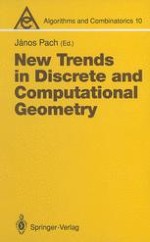
1993 | OriginalPaper | Buchkapitel
Introduction
verfasst von : János Pach
Erschienen in: New Trends in Discrete and Computational Geometry
Verlag: Springer Berlin Heidelberg
Enthalten in: Professional Book Archive
Aktivieren Sie unsere intelligente Suche, um passende Fachinhalte oder Patente zu finden.
Wählen Sie Textabschnitte aus um mit Künstlicher Intelligenz passenden Patente zu finden. powered by
Markieren Sie Textabschnitte, um KI-gestützt weitere passende Inhalte zu finden. powered by
Had you asked a layman in the fifties what mathematics was about, he would have thought “of dull uninspiring numbers, of a lifeless mechanism which functions according to laws of inescapable necessity” [1]. Coming from a family of many mathematicians, I learned in my younger days how to refute the widely held opinion that mathematicians are mainly concerned with counting, calculating and computing. Euclid’s famous proof of the existence of infinitely many primes by reductio ad absurdum was the standard example of a “philosophical” argument using no calculation: Assume, for the sake of contradiction, that there were only finitely many primes p1, p2,…, p n . Then p1p2 …p n + 1 could not have any prime divisor, which is clearly impossible! I was trained to believe that mathematics, a “gigantic, bold venture of the mind”, was “die Schule des Denkens” (the school of thinking) [2, 3]. For me it had much more to do with infinity, philosophy and puzzles, than with counting or tedious computation.